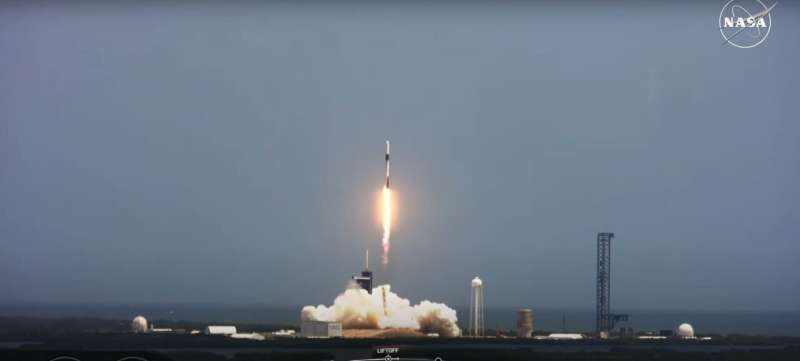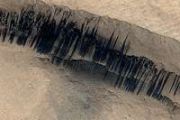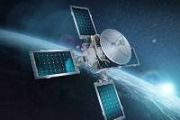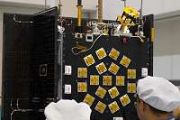
Copernical Team
Benefield Anechoic Facility tests first satellite in decades
 The Benefield Anechoic Facility (BAF) at Edwards AFB recently tested its first orbital satellite in decades. Anticipated to launch in late 2023, Navigation Technology Satellite-3 (NTS-3) will be the Department of Defense's first experimental, integrated navigation satellite system in nearly 50 years.
"This is so important because we are testing one of the new satellites that will be going
The Benefield Anechoic Facility (BAF) at Edwards AFB recently tested its first orbital satellite in decades. Anticipated to launch in late 2023, Navigation Technology Satellite-3 (NTS-3) will be the Department of Defense's first experimental, integrated navigation satellite system in nearly 50 years.
"This is so important because we are testing one of the new satellites that will be going Xona Space Systems certifies Spirent's LEO SatNav constellation simulator
 Spirent, the leading global provider of test and assurance solutions, is pleased to announce SimXona, an industry-first Xona satellite constellation simulator, has been fully certified by Xona Space Systems.
Xona is developing PULSAR, a commercial positioning, navigation, and timing (PNT) service built on a backbone of low Earth orbit (LEO) small satellites. Xona's patented high-powered sm
Spirent, the leading global provider of test and assurance solutions, is pleased to announce SimXona, an industry-first Xona satellite constellation simulator, has been fully certified by Xona Space Systems.
Xona is developing PULSAR, a commercial positioning, navigation, and timing (PNT) service built on a backbone of low Earth orbit (LEO) small satellites. Xona's patented high-powered sm 'Hot Jupiters' may not be orbiting alone
 Research led by an Indiana University astronomer challenges longstanding beliefs about the isolation of "hot Jupiters" and proposes a new mechanism for understanding the exoplanets' evolution.
While our Jupiter is far away from the sun, hot Jupiters are gas giant planets that closely orbit stars outside our solar system for an orbital period of less than 10 days. Previous studies suggested
Research led by an Indiana University astronomer challenges longstanding beliefs about the isolation of "hot Jupiters" and proposes a new mechanism for understanding the exoplanets' evolution.
While our Jupiter is far away from the sun, hot Jupiters are gas giant planets that closely orbit stars outside our solar system for an orbital period of less than 10 days. Previous studies suggested MDA and Thoth team up for greater space domain awareness above Canada
 In a new development aimed at boosting Canada's space domain awareness (SDA) capability, MDA Ltd., a global leader in space industry technology and services, has announced its partnership with Thoth Technology Inc. T
he collaboration will bring together MDA's commercial data services and Thoth's unique ground-based radar technology to enable deep space radar surveillance over Canada, enhan
In a new development aimed at boosting Canada's space domain awareness (SDA) capability, MDA Ltd., a global leader in space industry technology and services, has announced its partnership with Thoth Technology Inc. T
he collaboration will bring together MDA's commercial data services and Thoth's unique ground-based radar technology to enable deep space radar surveillance over Canada, enhan SpaceX Dragon cargo ship arrives at International Space Station
 The SpaceX Dragon cargo spaceship successfully docked with the International Space Station early Tuesday morning after taking off from the Kennedy Space Center in Florida the day before.
While the spacecraft's departure from Earth was rocky - being postponed twice over the weekend before its launch on Monday - the automated docking went off without a problem at 5:54 a.m. EDT.
T
The SpaceX Dragon cargo spaceship successfully docked with the International Space Station early Tuesday morning after taking off from the Kennedy Space Center in Florida the day before.
While the spacecraft's departure from Earth was rocky - being postponed twice over the weekend before its launch on Monday - the automated docking went off without a problem at 5:54 a.m. EDT.
T US, not China, keen on moon race
 By Yang Yuguang | China Daily Global | Updated: 2023-06-06 00:00
The moon is the only natural satellite of Earth. It is also the nearest celestial body to our planet, and selenology, or the study of the moon, is very important for scientists, as it can give them insights into other celestial bodies and advance planetary science. If we want to know the history of Earth, together with the history
By Yang Yuguang | China Daily Global | Updated: 2023-06-06 00:00
The moon is the only natural satellite of Earth. It is also the nearest celestial body to our planet, and selenology, or the study of the moon, is very important for scientists, as it can give them insights into other celestial bodies and advance planetary science. If we want to know the history of Earth, together with the history Life in a hologram
 The MIT physicist is searching for answers to one of the biggest questions in modern physics: How can our universe abide by two incompatible rulebooks? The first - the Standard Model of Physics - is the quantum mechanical theory of particles, fields, and forces, and the ways in which they interact to build the universe we live in. The second - Einstein's theory of general relativity - describes
The MIT physicist is searching for answers to one of the biggest questions in modern physics: How can our universe abide by two incompatible rulebooks? The first - the Standard Model of Physics - is the quantum mechanical theory of particles, fields, and forces, and the ways in which they interact to build the universe we live in. The second - Einstein's theory of general relativity - describes Frying Food in Space: A New Frontier in Astronaut Culinary Experience
 The dietary regimen of astronauts is a crucial aspect of space missions that impacts overall health and morale. The European Space Agency (ESA) has been funding research on cooking techniques in microgravity conditions, with a recent focus on frying food, a worldwide culinary method with intricate physics and chemistry at play. In a breakthrough for future lunar and Martian missions, the research has suggested that a beloved comfort food, fries, may be feasible to prepare even in outer space.
The dietary regimen of astronauts is a crucial aspect of space missions that impacts overall health and morale. The European Space Agency (ESA) has been funding research on cooking techniques in microgravity conditions, with a recent focus on frying food, a worldwide culinary method with intricate physics and chemistry at play. In a breakthrough for future lunar and Martian missions, the research has suggested that a beloved comfort food, fries, may be feasible to prepare even in outer space. Design proposal could double space solar cell efficiency
 When it comes to supplying energy for space exploration and settlements, commonly available solar cells made of silicon or gallium arsenide are still too heavy to be feasibly transported by rocket. To address this challenge, a wide variety of lightweight alternatives are being explored, including solar cells made of a thin layer of molybdenum selenide, which fall into the broader category of 2D
When it comes to supplying energy for space exploration and settlements, commonly available solar cells made of silicon or gallium arsenide are still too heavy to be feasibly transported by rocket. To address this challenge, a wide variety of lightweight alternatives are being explored, including solar cells made of a thin layer of molybdenum selenide, which fall into the broader category of 2D NASA, SpaceX launch solar arrays, cargo to space station

Following a successful launch of NASA's SpaceX 28th commercial resupply services mission, two new solar arrays, science investigations, and supplies are on their way to the International Space Station.
Carrying more than 7,000 pounds of cargo to the orbiting laboratory, the uncrewed SpaceX Dragon spacecraft launched on the company's Falcon 9 rocket at 11:47 a.m. EDT, Monday, June 5, from NASA's Kennedy Space Center in Florida.
The cargo spacecraft is scheduled to autonomously dock with the space-facing port on the station's Harmony module at approximately 5:50 a.m. and remain at the station for about 21 days.





























